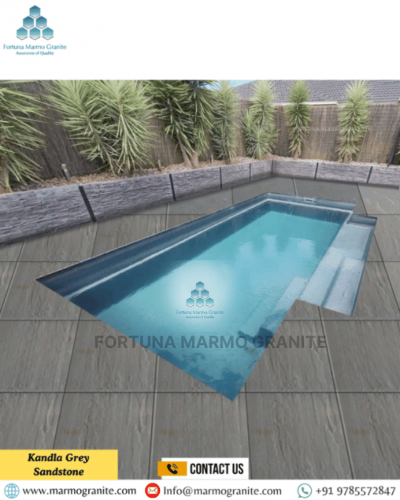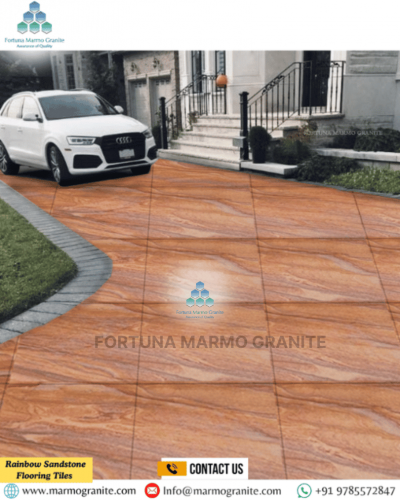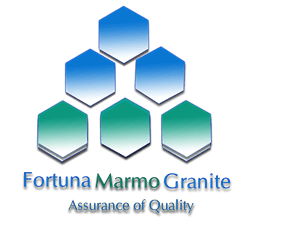Why Sandstone is the Smart Choice for Commercial Building Exteriors
Why Sandstone is the Smart Choice In today's competitive commercial real estate market, a building's exterior does more than look appealing—it shapes how people perceive the business inside. That's why developers, architects, and business owners increasingly choose sandstone. This natural stone combines timeless beauty with lasting strength. Its earthy tones, unique textures, and versatile finishes work well in both modern and traditional designs. Sandstone withstands harsh weather, pollution, and daily wear, maintaining its charm for years with minimal upkeep.
Beyond aesthetics, sandstone helps reduce energy costs by resisting heat and regulating temperature. As a natural, recyclable material, it supports eco-friendly building practices, including LEED certification. For businesses seeking a bold, lasting impression, sandstone offers more than style. It conveys trust, adds value, and showcases sustainability. Sandstone transforms ordinary buildings into landmarks, reflecting a company's commitment to quality and vision.
The Enduring Appeal: Aesthetics That Transcend Trends
The inherent beauty of sandstone captivates architects, designers. and developers with its timeless charm. Unlike synthetic materials, which often look uniform and manufactured. sandstone displays a rich spectrum of natural earthy tones. These range from soft beiges and honeyed yellows to deep rusts, warm browns, and cool grays. The colors complement many architectural styles. adding warmth and visual sophistication to commercial exteriors. They also enhance a building's presence and curb appeal. What truly sets sandstone apart is its individuality. Each slab forms a unique work of art, shaped by natural forces over millions of years.
Consider the visual impact: a commercial building clad in sandstone radiates solidity. and sophistication. It avoids the cold, impersonal feel of glass and steel. as well as the sometimes outdated look of pre-fabricated panels. Sandstone adapts beautifully to many architectural styles. from classic designs that evoke historical grandeur to contemporary structures seeking natural. understated elegance. This versatility keeps a sandstone exterior visually appealing and relevant for decades. resisting changing architectural trends. Subtle texture variations—from smooth honed finishes to rugged split-face applications. offer diverse design possibilities, creating facades. that engage both the eye and the touch.
Built to Last: Unrivalled Durability and Longevity
Beyond its aesthetic appeal, sandstone's true value lies in its remarkable durability, rooted in its geological origins. Formed over millions of years through the natural compaction and cementation of sand grains—often bonded by minerals such as silica, calcium carbonate, or iron oxides—sandstone develops exceptional strength and stability. This ancient formation process creates a stone that is dense, resilient, and highly resistant to wear, weathering, and mechanical stress. For commercial building exteriors, which face constant challenges like wind-driven debris, UV exposure, moisture, and thermal expansion, sandstone provides a dependable, long-lasting solution.
Unlike many man-made materials that can degrade quickly, sandstone offers an impressive lifespan. It resists cracking, chipping, and fading, even under harsh environmental conditions. Extreme temperatures—from scorching summers to freezing winters—do not compromise its structural integrity. Its density also provides strong protection against wind-blown debris and minor impacts, common in urban settings. This natural durability reduces long-term maintenance costs and extends the life of buildings, offering a superior return on investment compared to materials that require frequent repair or replacement.
Weathering the Storm: Resistance to the Elements
Commercial buildings face harsh environmental conditions—scorching sun, heavy rain, strong winds, fluctuating humidity, and, in some areas, frost and pollution. These elements can gradually cause fading, cracking, erosion, and structural damage. Sandstone, however, withstands such challenges with minimal wear. Formed over millions of years from compressed sand and minerals, sandstone has a dense, durable structure. This natural strength makes it far more resistant to weathering and erosion than many other cladding materials.
Its low porosity, particularly in denser varieties, helps prevent water absorption, which is crucial for preventing issues like efflorescence (white mineral deposits) and freeze-thaw damage. While no stone is entirely impervious, well-sealed and properly installed sandstone exhibits excellent resistance to moisture penetration. Furthermore, sandstone's natural pigments are incredibly stable, meaning its color will not fade or bleach over time due to UV radiation, unlike many painted or synthetic surfaces. This ensures that the building's exterior retains its vibrancy and aesthetic appeal years after installation, maintaining a fresh and new look without the need for constant repainting or recoating.
The Green Advantage: Sustainability and Environmental Responsibility
In an era where environmental responsibility is not merely a trend but an essential commitment, the choice of sustainable building materials plays a critical role in shaping the future of architecture and construction. As climate concerns and ecological awareness continue to influence industry standards, sandstone emerges as a naturally eco-friendly material that aligns seamlessly with modern green building initiatives. Quarried directly from the earth with minimal processing, sandstone requires significantly less energy to extract and manufacture compared to synthetic or highly engineered materials. Its natural abundance and durability ensure that it does not deplete resources excessively or contribute to environmental degradation. Moreover, sandstone is fully recyclable and biodegradable, meaning it can be repurposed or returned to the environment without leaving harmful residues or waste. Its thermal mass properties also contribute to energy efficiency, helping buildings maintain more consistent internal temperatures and thereby reducing reliance on artificial heating and cooling systems.
As a natural material, sandstone is abundant and requires minimal processing compared to manufactured alternatives. Extracting and preparing it consumes far less energy than producing steel, concrete, or synthetic cladding. Sandstone is also a renewable resource on a geological scale. Its long lifespan reduces the need for frequent replacement, minimizing waste and conserving resources. Additionally, its thermal mass helps regulate indoor temperatures, lowering the reliance on artificial heating and cooling. This improves energy efficiency, reduces operational costs, and lowers the building's carbon footprint. These qualities make sandstone ideal for LEED-certified projects and environmentally conscious businesses.
Versatility in Design and Application
Beyond its functional benefits, sandstone offers remarkable versatility for architectural design. Designers and developers favor it for creating visually striking and personalized commercial spaces. Its workability allows easy cutting, carving, and finishing in numerous ways. Sandstone can form grand façades, sturdy structural elements, delicate moldings, intricate engravings, or artistic embellishments.
Whether the aim is to convey classic grandeur with traditional motifs or achieve a sleek, modern aesthetic with clean lines and smooth surfaces, sandstone delivers the creative freedom to realize any vision. This adaptability is particularly valuable in commercial projects, where a building must reflect the ethos of a business or brand—whether luxury, innovation, sustainability, or heritage.
Sandstone comes in multiple finishes—honed for a smooth, matte look, polished for a subtle sheen, sandblasted for a textured, rustic feel, or rock-faced for a natural, robust appearance. This variety, along with its rich color palette, opens up endless design possibilities. Architects can create striking feature walls, elegant entryways, sturdy base courses, or a consistent, sophisticated facade across a building. Its compatibility with glass, metal, and wood adds further flexibility, allowing for cohesive and visually appealing composite exteriors.
Maintenance Made Easy: Keeping Sandstone Pristine
Many people mistakenly believe that natural stone demands constant upkeep, which discourages its use in large-scale projects. Sandstone, however, proves otherwise with its low-maintenance qualities, especially outdoors. Its strong composition and natural resistance to weather allow it to withstand years of sun, rain, wind, and pollution without significant damage. The surface resists staining and does not require frequent polishing or sealing like more delicate materials. Simple regular cleaning with water and mild detergents keeps sandstone looking fresh and vibrant.
Regular cleaning with water and a mild detergent removes most surface dirt and grime. For tougher stains, use specialized stone cleaners, but avoid harsh chemicals. Periodic sealing, depending on the sandstone type and weather exposure, enhances resistance to moisture and stains. Promptly addressing spills or contaminants prevents damage and can usually be handled by standard commercial cleaning crews without special tools. This simple maintenance reduces operational costs and helps the building retain its pristine appearance for years.
Conclusion
Why Sandstone is the Smart Choice stands out as a reliable and intelligent option for commercial building exteriors. It combines timeless beauty, strength, and practicality. Its natural earthy tones and textured surface add warmth and character to architectural designs, creating an inviting yet sophisticated look. Sandstone suits both contemporary and traditional styles.
Beyond its aesthetic appeal, sandstone offers exceptional durability. It resists extreme temperatures, moisture, and UV exposure, making it ideal for buildings that must endure over time. With minimal maintenance and fewer costly repairs, sandstone ensures long-lasting performance and visual appeal.
Why Sandstone is the Smart Choice Its adaptability in terms of finishes, cuts, and sizes further enhances its appeal, allowing architects and designers the freedom to craft distinctive façades that leave a memorable impression. Indian Granite Supplier At Fortuna Marmo Granite, we understand the value of combining aesthetics with durability, and that's why we offer a premium selection of Indian sandstone carefully curated and processed using advanced technology and traditional craftsmanship. As a trusted name in natural stone manufacturing and export, we are committed to delivering not just material but also reliability, precision, and excellence with every order. Why Sandstone is the Smart Choice Our expert team is dedicated to helping you source the right sandstone solutions that reflect your brand's vision while ensuring long-term performance and architectural distinction. With Fortuna Marmo Granite, transform your commercial exterior into a statement of strength, elegance, and smart design.



